All about paving slab paths
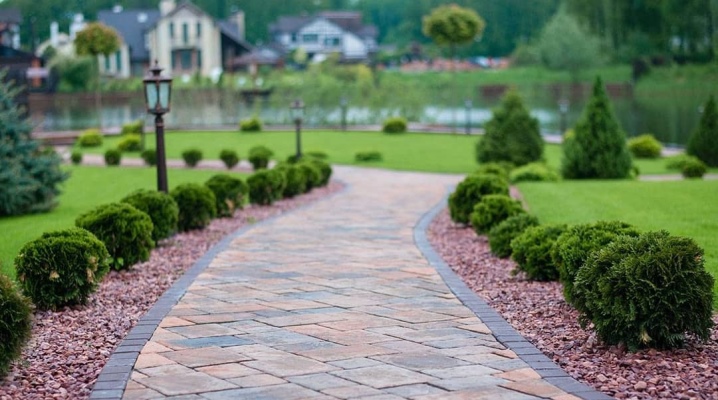
It is necessary for every gardener and just the owner of a country dwelling to know everything about paths made of paving slabs. It is necessary to understand the peculiarities of laying tiles 40x40, 50x50 cm and other sizes. A separate important topic is how to make garden paths in the country with your own hands.
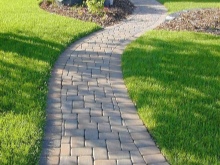

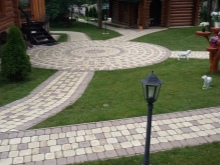
Peculiarities
Before making garden paths from paving slabs, you should thoroughly understand the specifics of such material. The cover, so admiring modern urbanists, appeared at the beginning of the 19th century "not from a good life." Cities grew rapidly, and there were not enough ordinary stones for paving the road and pedestrian part.

Paving slabs have become an excellent replacement for traditional paving stones. Pretty soon, this coating gained immense popularity. However, in our country it was used little, because at first there was enough ordinary stone for a limited area of cities, and then they found it more convenient to use asphalt. Chemically, paving slabs are simple:
- high quality cement;
- washed sand;
- selected gravel;
- clean industrial water;
- plasticizers (which also lower the moisture holding capacity of the material).

Without the use of plasticizers, by the way, it is impossible to ensure the frost resistance of the material. But the main function of these substances is to facilitate the formation of products. For such a purpose, they try to use odorless substances with maximum chemical inertness. Too active reagents would be difficult to introduce into the concrete solution. The quality of the cement used is critical.
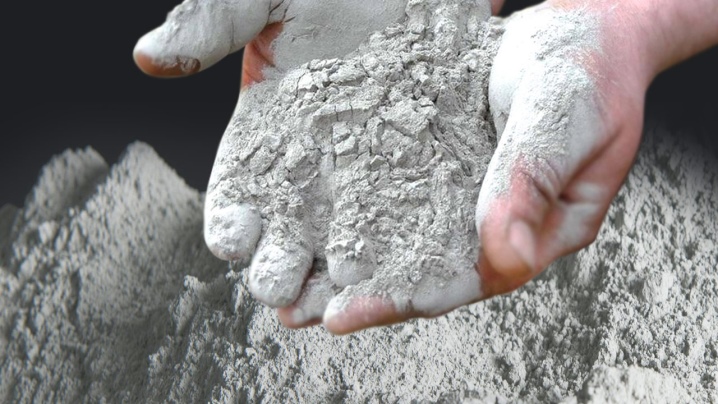
But the importance of sand cannot be ignored either. It should not be mixed with clay. The use of free-flowing quartz sands is ideal. They are distinguished by sufficient strength and, moreover, they are visually beautiful. Screening of granite is mainly used for filling.
As a result, we can conclude that paving slabs are completely natural, but do not contain solid natural stone, therefore they are quite cheap without losing their external beauty.

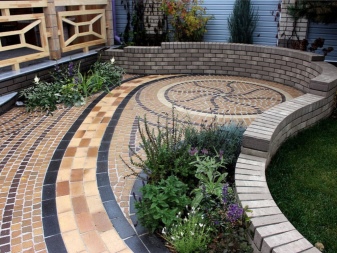
Water will not accumulate on the surface as it does with concrete or asphalt. It will seep into the ground and be absorbed there. If you suddenly need to repair the coating or gain access, say, to the heating pipe, then the material can be easily dismantled and re-laid. The replacement of individual blocks is also easy. And the result of such a repair is much more attractive than a patching of asphalt.

It is also worth noting the following features of paving slabs:
- a variety of colors and geometric solutions;
- mechanical strength (with strict adherence to technology);
- minimum probability of abrasion;
- lack of harmful emissions;
- minimal need for care;
- all-season suitability.
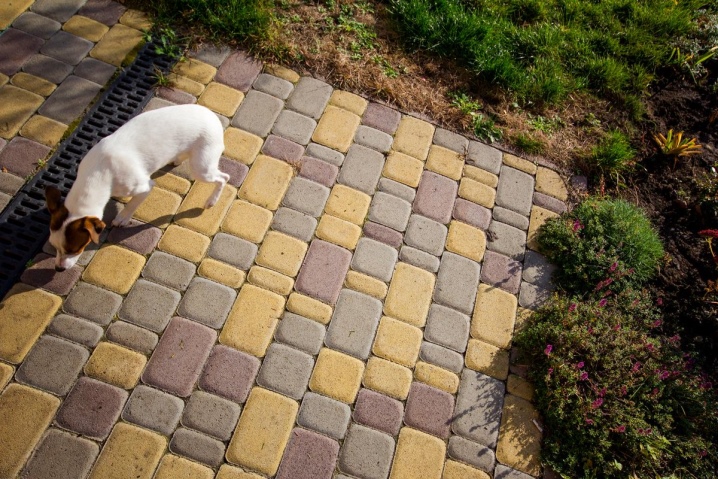
Paving slabs can be obtained by vibration pressing or vibration casting. These methods do not affect the composition of the components used, but they directly affect the characteristics of the finished product.
Vibro-pressed structures are especially appreciated for strength and durability. Their internal structure is roughly the same as that of the toughest mountain minerals. But vibro casting also has its advantages - it is a relatively easy, albeit more time-consuming method, and the tiles obtained in this way are almost immune to contamination.
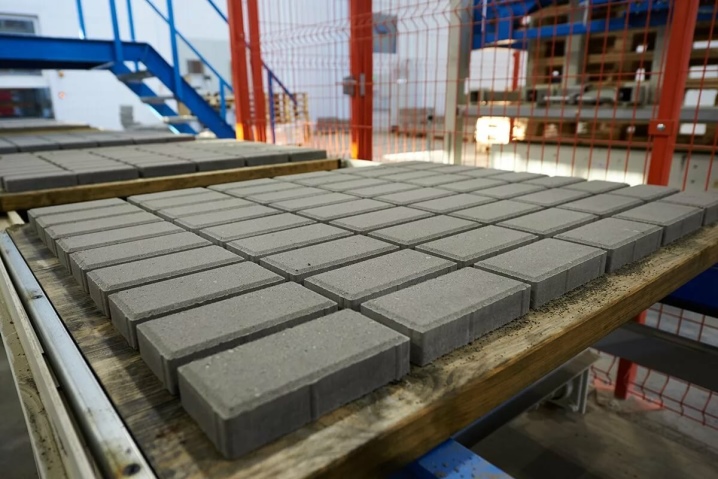
Overview of tile types
In a private garden, not only design is important, but also the practical characteristics of paving slabs.Each manufacturer independently determines its dimensions according to its ruler, and also decides how such structures should be made. The most important criterion that cannot be ignored is the thickness of the tile elements. It is by her that they judge what the product can be used for:
- the thinnest ones are used for ordinary footpaths;
- more powerful products are used for bike paths and universal routes;
- for monolithic areas and for arranging car parks, driveways, the thickest type of sidewalk blocks is best suited.
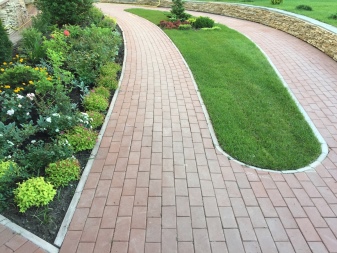
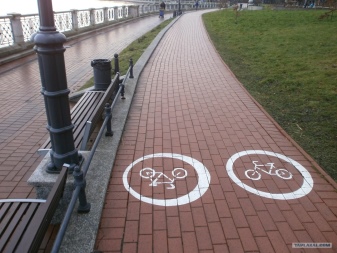
More precisely, a 3 cm thick material is suitable for a footpath. This is a budget solution that will allow you to move freely around the site and arrange areas under sheds. But for access roads, such material is definitely not suitable. But it can also be used to decorate barbecue areas.
A tile of 5-6 cm is considered universal. It is relatively expensive, but it can even be used for registration of entrances to garages where cars or minibuses are parked. For private use, such a bearing capacity is quite sufficient.
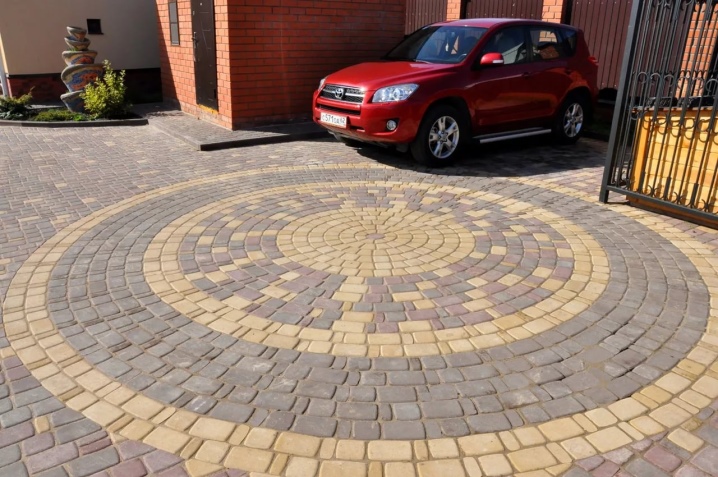
Even thicker, from 7-8 cm, structures are very expensive, a lot of money will have to be spent on their installation. But you can count on the excellent durability of the tracks. It is better to use them for country houses, which are often approached by large trucks.
Tiles, including paving stones, are square in shape. Such products are in demand with dimensions:
- 30x30;
- 35x35;
- 40x40 cm.
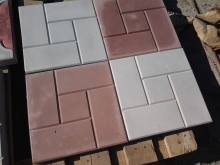

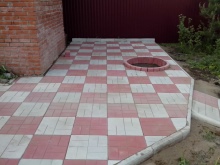
Larger products (500x500 mm), and even more 600x600 mm, are mainly purchased by large organizations. It is rather difficult to lay them with your own hands. A very relevant solution in many cases is a rectangular tile. Most of these are products of 20x10 or 25x12.5 cm. However, each company can introduce some changes and adjust this seemingly universal size.
In some cases, over a large area, not individual tiles are more appropriate, but whole slabs of 1000x500x100 mm. It is almost impossible to assemble them manually - you need to use special equipment. But the already familiar straight tile is not always used. Very good tracks sometimes come from round or even more intricate shapes. Another important point is the color of the elements.

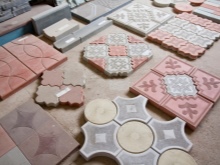
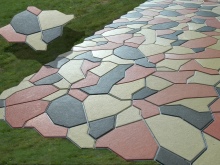
It is not associated with design, or rather, not only with design. For those who are not chasing an elite and unusual performance, it would be more correct to limit themselves to structures made of gray stone mass. It is almost universal and fits harmoniously into any aesthetic environment. In addition, the rejection of additional dyes significantly reduces the cost of such products.
If desired, you can give the tiles almost any color. However, it should be understood that the paint introduced from above, in contrast to the one distributed throughout the entire volume of the tile, is easily washed out.
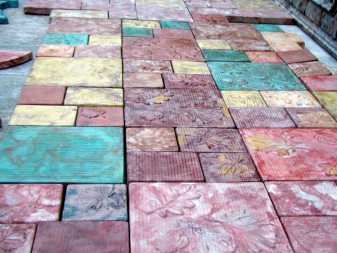
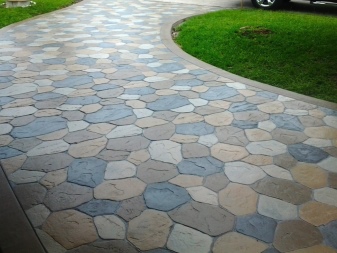
In most cases, use:
- yellow;
- Red;
- and brown dyes (other options are rare and impractical).

Wave-shaped tiles are in great demand. On its basis, amazing patterned compositions can be obtained. The design of such designs in various colors is practiced. In the garden, with the help of such blocks, you can embody the most original idea. Typically, wavy tiles have the following dimensions:
- 230x103x60;
- 200x100x60;
- 200x100x45 mm.
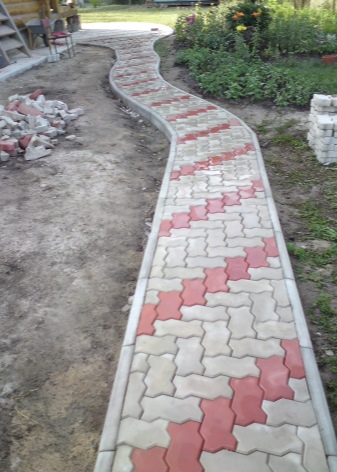
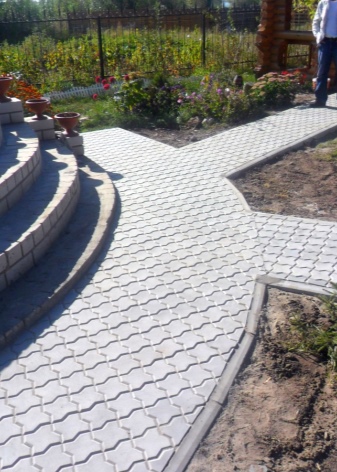
"Clover" also has a very good reputation. Suffice it to say that it is often used by both professional utilities and private homeowners. Prevailing size grid:
- 295x295x30;
- 267x218x45;
- 267x218x60 mm.
Paving stones (bricks) are preferred for places subject to heavy wear. In more gentle conditions, ordinary tiles are used, which only imitate a cobbled surface. As for materials, clinker tiles occupy exceptional positions in terms of strength. But it is very expensive and not everyone can afford it.
Important.The final selection should always be entrusted to professionals, at least in consultation with them.
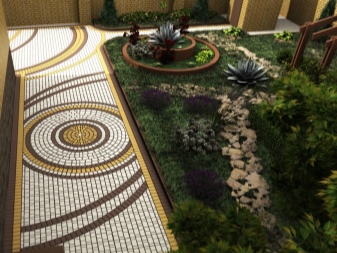
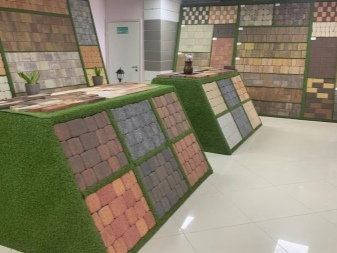
How can you lay out?
Just choosing the type of tile to decorate the path near the house is not enough. It is imperative to take into account the various basic drawings that are to be drawn up. Whenever possible, you should choose such styling options that in this particular location will reduce pruning. The more complex and intricate the geometric shapes of the masonry, the more you will have to trim. However, chasing simplification is not always wise - you need to maintain an optimal balance.

The most difficult thing is to draw up curved zones. In them, the amount of trimming is maximum. Therefore, such options are chosen only in three situations:
- when it best suits the surrounding space;
- when you need to adjust the contours of the site;
- when you need to radically improve landscape design.
Important. It is recommended to conditionally prepare its appearance in the virtual model before laying out. Such planning will eliminate a lot of very unpleasant mistakes.
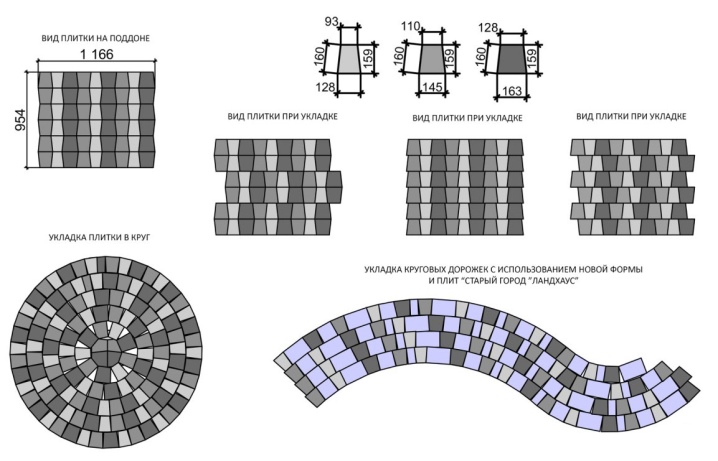
Tiles of identical dimensions are laid out both according to a given pattern and in any order. Paving stones are laid:
- with a shift in the seam;
- with matching transverse seams;
- in pairs;
- at an angle of 90 degrees.

The most convenient and simple schemes are:
- Herringbone;
- hexagon;
- longitudinal and transverse (typical for the "Old Town");
- chaotic layout;
- shift of rows in relation to each other, in the longitudinal and transverse planes (typical for the "Coil");
- Chess board;
- honeycomb.
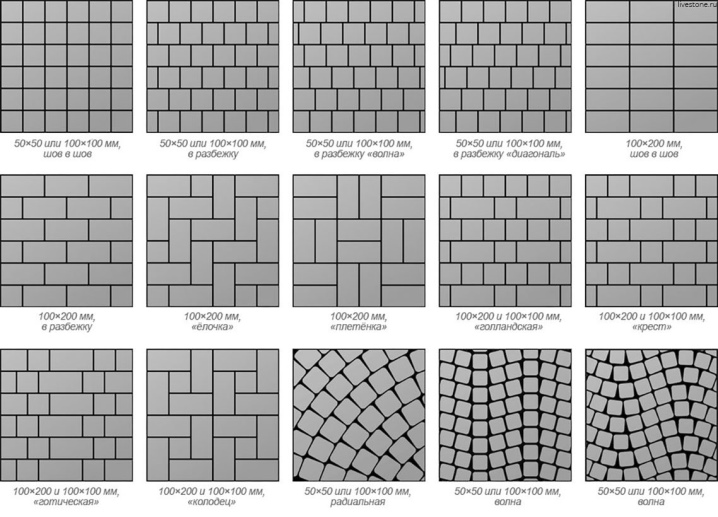
Styling
Layout and markup
In order to correctly make a paving slab track in the country with your own hands, you must first of all assess the required amount. Important. Calculate the demand with a margin of at least 15%. This will avoid problems with manufacturing and construction defects. The plan (drawing) allows you to help do everything correctly. As practice shows, the time spent on its preparation pays off by saving materials and money.
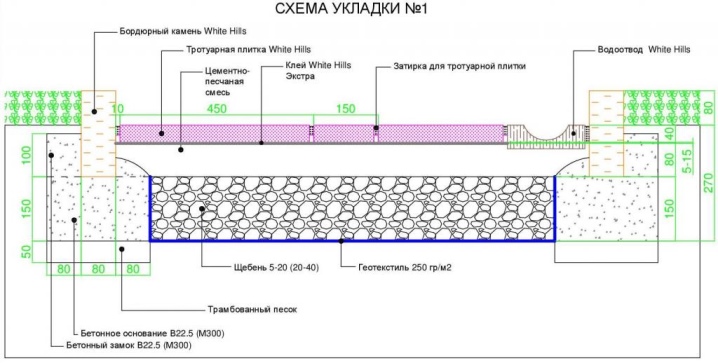
Curb installation
But just laying a path in the garden or garden is hardly reasonable. It is also necessary to take care of the arrangement of the curbs. For their manufacture, blocks are several times thicker than the tiles used. The border should go along the entire perimeter of the track. Otherwise, it will creep, and weeds will also penetrate.
For work, you can use:
- plastic;
- a natural stone;
- concrete curb blocks;
- jellied mass.
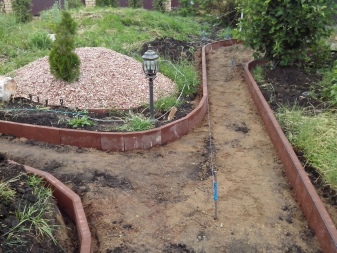

The marking of the future site is carried out using pegs, cords and twines. It is advisable to walk around the site in different directions. This will allow you to determine the track layout as accurately as possible. In the course of work, the marked line can be monitored. There is practically no need to verify it by level.

Drainage
It is impossible to lay out paving slabs without drainage. Internal drainage is done in wet clay areas. In addition to laying pipes, you will need to provide some slope. On dry ground, you can limit yourself to external drainage. It is created with a slope of 2-3 degrees to the curb.
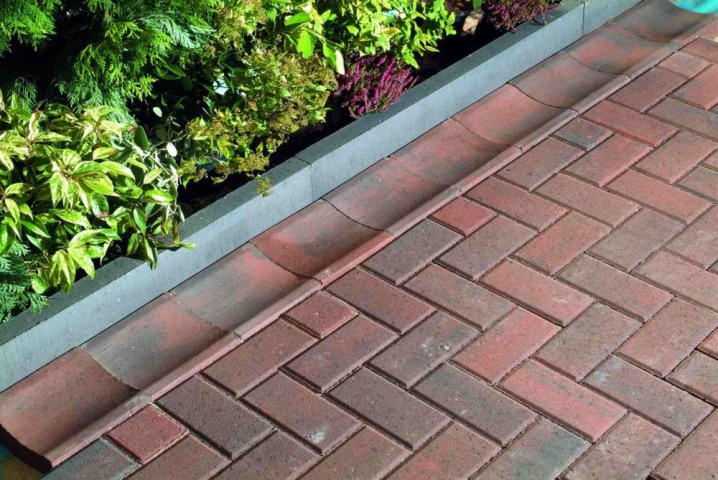
Paving
The sequence of work is as follows:
- digging a ditch 0.2 m deep;
- removal of plants;
- soil compaction;
- if necessary - placing concrete;
- installation of borders;
- backfilling, leveling gravel or crushed stone;
- preparation of the solution;
- backfilling of wet coarse sand over the gravel pad;
- trying on tiles;
- if necessary - additional compaction of sand.
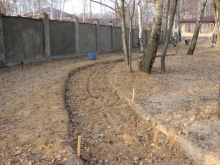
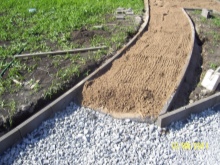

Care Tips
Taking care of paving slabs is not so difficult. Main nuances:
- clean comprehensively twice a year;
- sweep with polymer brushes;
- wash with a stream of water (without strong pressure);
- use wooden and rubber scrapers;
- abandon steel and aluminum blades;
- avoid chlorine-containing products;
- use only drugs recommended by specialists;
- cleaning from ice, should not be carried out with salt and salt mixtures;
- remove lubricating and machine oils immediately.

Beautiful examples
The photo shows how elegantly light gray and terracotta paving slabs can look. Blocks of different sizes and shapes are deliberately used in a strictly defined way. Importantly, the dark red border around the perimeter only improves the perception of the structure.
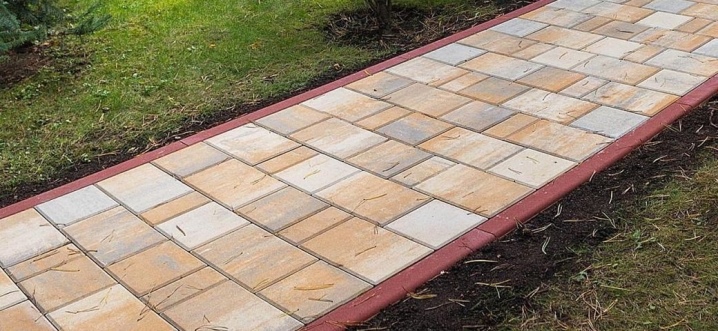
Combining a light stone path with a bright red stripe is also a good idea. In this case, thoughtful borders and green grass contribute to a positive perception of the composition.
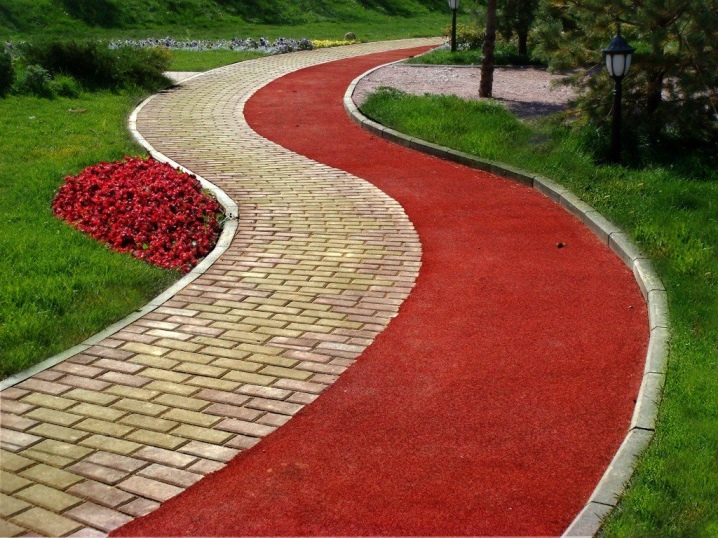
An angular layout might look like this. The red and black combination, in any case, looks unusual.

White and pink squares, alternating according to a certain rule, can look just as good. They stand out favorably with their brightness, against the background of dark green grass. A few juicy flowers emphasize this ratio.
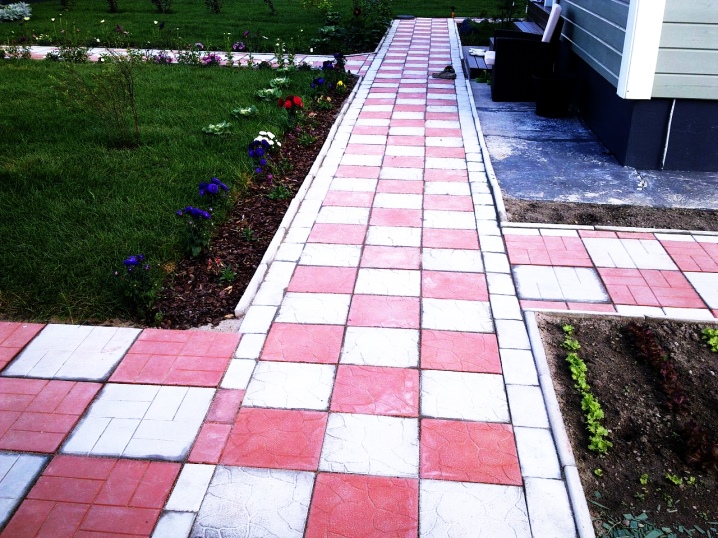
How to make a paving slab track with your own hands, see the next video.













The comment was sent successfully.